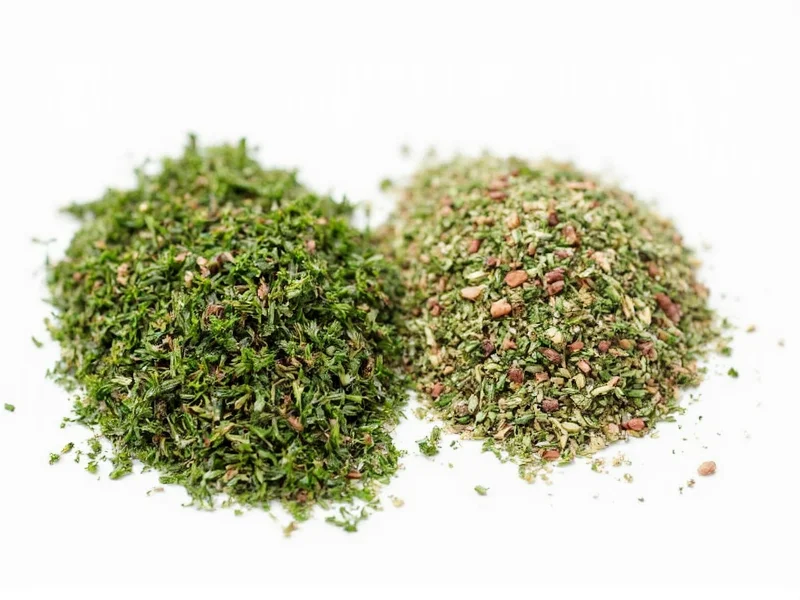The standard conversion ratio is 1 teaspoon of dried thyme equals 1 tablespoon of fresh thyme. This 1:3 ratio accounts for the concentration difference between dried and fresh herbs, as the drying process removes moisture and intensifies flavor compounds.
When following recipes or improvising in the kitchen, understanding herb conversions prevents flavor imbalances. Dried thyme contains approximately three times the concentrated flavor of fresh thyme due to moisture removal during the drying process. This fundamental conversion principle applies to most culinary herbs, though thyme's robust nature makes precise measurement particularly important.
Why the 1:3 Conversion Ratio Matters
Thyme's essential oils and flavor compounds become significantly more concentrated when dried. Fresh thyme contains about 85% water content, which evaporates during drying, leaving behind intensified aromatic compounds. Using equal measurements would result in dried thyme overwhelming your dish with bitter, medicinal notes.
Chef Marco Pierre White emphasizes: "Respect herb conversions—they're not suggestions but chemical necessities. Underestimating dried thyme's potency ruins otherwise perfect dishes." Professional kitchens maintain strict conversion standards to ensure recipe consistency across seasons when fresh herb availability fluctuates.
Dry Thyme to Fresh Thyme Conversion Chart
| Dried Thyme | Fresh Thyme Equivalent | Best Used For |
|---|---|---|
| ¼ teaspoon | ¾ teaspoon | Delicate sauces, egg dishes |
| ½ teaspoon | 1½ teaspoons | Salad dressings, light soups |
| 1 teaspoon | 1 tablespoon | Standard conversion for most recipes |
| 1½ teaspoons | 4½ teaspoons | Stews, braises, hearty dishes |
| 1 tablespoon | 3 tablespoons | Large batch cooking, preserving |
Flavor Profile Differences You Should Know
Fresh thyme offers bright, grassy notes with subtle mint undertones, while dried thyme develops earthier, more pungent characteristics. The drying process transforms thymol (thyme's primary compound) into more complex aromatic molecules. This explains why:
- Long-cooking dishes (stews, braises): Dried thyme often performs better as its concentrated flavor withstands extended cooking
- Finishing touches (garnishes, fresh sauces): Fresh thyme provides superior aromatic complexity
- Acidic preparations (vinaigrettes, lemon-based dishes): Fresh thyme maintains brighter notes
Practical Substitution Guidelines
When substituting between forms, consider these professional kitchen practices:
- For immediate use: Crush dried thyme between your palms before adding to release essential oils
- For long-cooking dishes: Add dried thyme at the beginning, fresh thyme during the last 15 minutes
- When uncertain: Start with ⅔ of the recommended dried amount—you can always add more
- For delicate dishes (fish, eggs): Use fresh thyme whenever possible for subtler flavor
Storage Impact on Conversion Accuracy
Dried thyme loses potency over time—properly stored, it maintains peak quality for 6-12 months. Older dried thyme may require slight measurement adjustments:
- Freshly dried thyme: Strict 1:3 ratio applies
- 6-9 month old dried thyme: Use 10-15% more than standard measurement
- Over 12 months: Consider replacing stock—flavor compounds degrade significantly
Store dried thyme in airtight containers away from light and heat. Fresh thyme lasts 10-14 days refrigerated when stems are placed in water like cut flowers and covered loosely with a plastic bag.
Avoid These Common Substitution Mistakes
Even experienced cooks sometimes misjudge thyme conversions. Watch for these pitfalls:
- Assuming all herbs share identical ratios: Thyme's 1:3 ratio differs from basil (1:4) or oregano (1:2)
- Measuring by volume instead of weight: For precision cooking, use 0.3g dried = 1g fresh thyme
- Adding dried thyme too late: It needs time to rehydrate and release flavors
- Using stems interchangeably: Fresh thyme stems are woody and inedible; dried thyme is typically just leaves
When Fresh Thyme Is Non-Negotiable
Certain preparations demand fresh thyme for authentic results:
- Herb-infused oils and vinegars
- Raw preparations like compound butters
- Fragrant garnishes for finished dishes
- Delicate seafood preparations
- Summer salads and fresh vegetable dishes
Conversely, dried thyme excels in winter stews, tomato-based sauces, and spice rubs where its concentrated flavor penetrates ingredients more effectively.
What's the most accurate way to substitute dried thyme for fresh in recipes?
The most accurate substitution uses a 1:3 ratio—1 teaspoon dried thyme equals 1 tablespoon fresh thyme. For precision cooking, measure by weight: 0.3 grams dried thyme equals 1 gram fresh thyme. Always adjust based on dried thyme's age, as older stocks lose potency.
Can I use the same measurement for thyme when making tea?
No—tea requires different measurements. For thyme tea, use 1½ teaspoons dried thyme or 1½ tablespoons fresh thyme per 8 ounces of water. Dried thyme's concentration means you need less, but steeping time should be reduced to 5 minutes to prevent bitterness.
Why does my dish taste bitter when I substitute dried thyme for fresh?
Bitterness occurs when using equal measurements instead of the proper 1:3 ratio. Dried thyme is three times more concentrated, so using the same volume creates overpowering, medicinal flavors. Always reduce dried thyme quantity when substituting, and add it earlier in cooking to allow flavors to mellow.
Does the conversion ratio change for different thyme varieties?
Most common varieties (English, French, lemon thyme) follow the standard 1:3 ratio. However, more delicate varieties like variegated thyme may require a 1:3.5 ratio, while robust wild thyme might need 1:2.5. When in doubt, start with less dried thyme and adjust to taste.
How do I adjust thyme measurements when using thyme paste instead of fresh?
Thyme paste (typically 1 part thyme to 1 part oil) uses a 2:3 ratio—2 teaspoons paste equals 1 tablespoon fresh thyme. For dried thyme conversions, 1 teaspoon dried thyme equals 1½ teaspoons thyme paste. Always taste before final seasoning as oil content affects flavor release.











 浙公网安备
33010002000092号
浙公网安备
33010002000092号 浙B2-20120091-4
浙B2-20120091-4